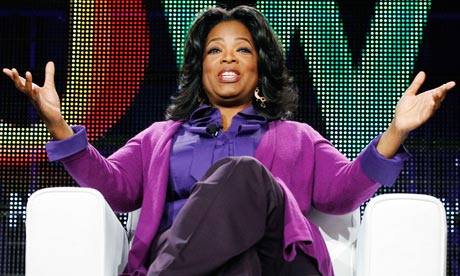by Sambit Bal
Victory brings the warmest glows but the cold light of defeat can bring clarity. The great thing about success is that it is often self-perpetuating, but the trouble is, it can sometimes obscure flaws. If India aren't sick to their stomachs after being handed out a drubbing reminiscent of their dark ages, they don't possibly care enough; but not everything will have been lost if the pain of this defeat spurs the changes essential to prevent a free fall.
It was just as well that Sachin Tendulkar didn't go on to get his 100th hundred at The Oval. It denied India a distraction, a glimmer of feel-good in their hour of misery. Indian cricket doesn't need the blow to be softened at this moment; instead it needs to feel the full impact of this devastating loss, feel the pain, look within and ponder the future with a clear understanding of their failings. Success highlights strengths but failure often offers better opportunities to learn, for it exposes weaknesses. Those who remain successful for long periods use lessons from failure to their advantage.
India didn't fluke their way to the top of the Test table, or to their World Cup win; indeed, they scrapped every inch, digging into their deepest reserves and drawing on the exceptional skills of a core group of cricketers. They won the World Cup despite the thinness of their bowling attack and despite being the most unathletic team in the tournament. They drew the Test series in South Africa despite not having played a practice game and despite losing the first Test by an innings and some. They managed to beat Australia in a Test by adding nearly 100 runs for the last two wickets in the final innings. In the series before that, they came back after a huge defeat against Sri Lanka. The rescue act was bound go awry some day, and England were too good a team let India come from behind.
The appraisal must begin with honesty. India will do themselves no favours by wishing this away as an aberration. A return to winning ways in one-day cricket or against West Indies at home should change nothing. There has been talk about them not respecting their No. 1 status. The truth, perhaps, is that they backed themselves to overcome the lack of preparation, bench strength and general fitness.
Zaheer Khan turned up with a paunch and without match practice; Tendulkar came off a holiday; Virender Sehwag chose to postpone his shoulder surgery until his team had been knocked out of the IPL, and landed in England after India were two-down; Gautam Gambhir, who played the IPL with an injury, chose to sit out the second Test because of a painful elbow. India delayed calling for an replacement for Zaheer until the second Test. Eventually RP Singh was summoned from Miami, and he arrived looking every inch a man who had been enjoying the good life.
It is one thing for a team to believe it can fight its way out of the worst adversity, another to repeatedly put itself in adversity. India ticked every box for how not to prepare for a big series.
Administrators and players must be honest about where they stand vis a vis Test cricket. The No. 1 spot in the format was attained not by design but through the burning ambition of a small group of Indian cricketers, for whom the Test version remained the pinnacle. The awakening among the administrators came only after the team became No. 1. Hastily a one-day series against Australia was rearranged to accommodate two Tests. Much in the same manner, an additional tour game is now being sought before the Test series in Australia.
Administrators bristle and players shy away when it is suggested that not everything about the IPL is good for Indian cricket. Of course, there is no denying it its place. Crowds love the entertainment, players love the financial security it provides, and administrators love the might the money brings. But the real challenge for India is to keep Test cricket attractive to players, and it won't be achieved by mere sloganeering.
The biggest problem with Twenty20, and particularly with the IPL, is that it provides disproportionate rewards for too little work and limited skills. Who would pass up the chance of earning in six weeks what might otherwise take a couple of years? There is no other reason why even those Indian players who had withdrawn from playing international Twenty20 even before the IPL began, would never consider missing an IPL season.
It is up to the Indian board, if it wishes to back its words up with deeds, to provide enough incentives to keep the players interested in Test cricket, which requires far greater toil, not merely on the field but also in preparation. To turn up and deliver four overs of change of pace might not be as simple as it sounds, but weigh that up against maintaining the intensity over 60 overs against international batsmen. Since they drew up the rules of the IPL and possess the cash to call the shots in world cricket, it is not beyond the means of Indian cricket's overlords to make the Test game the most remunerative form.
And since they dictate terms in most matters, how difficult can it be for the Indian cricket board to draw up a schedule that gives their cricketers the best chance of success in all three forms of the game?
If Indian players have looked utterly spent during the English summer, consider this: half the team will drag themselves to the Champions League three days after they complete their one-day assignment in England, then take on England in a five-match one-day series, and cram in a full home series against West Indies before flying out to Australia for four Tests and a one-day triangular.
India's future without their batting greats is too gruesome to contemplate, but the bowling is already in crisis. Zaheer faces an uncertain future, Sreesanth has been a huge disappointment, and that Praveen Kumar, resourceful and skillful as he is, was India's spearhead in England, must say something. The spin front is even more depressing: Harbhajan Singh has continued to slide and not one credible contender is in sight.
One way of looking at the ruins of this tour would be that it cannot get worse, but Indian cricket must brace itself that it's unlikely to get much better in the immediate future. As a Test team India have peaked and descent is inevitable. How well this is managed is to down to the leaders.
The role of the captain and the coach will be vital. It is a test of character for MS Dhoni, who took over an upwardly mobile team and led them to heights never achieved before. But he will be required now to extend himself beyond the field - for players will need to be nurtured and managed. Duncan Fletcher is no stranger to building a team, but he must now demand and be given the powers he needs, and the space to help shape a team not merely capable of winning back the top spot but of holding on to it.
The most important cog in this wheel will be N Srinivasan, the BCCI's president incumbent and widely acknowledged as the most powerful man in Indian cricket. More than anything else Indian cricket needs its priorities sorted and a roadmap set. It is inconceivable that a country so passionate about the game, with so much wealth and so many people, can't produce, by will and planning, another set of winners.
Sambit Bal is the editor of ESPNcricinfo


